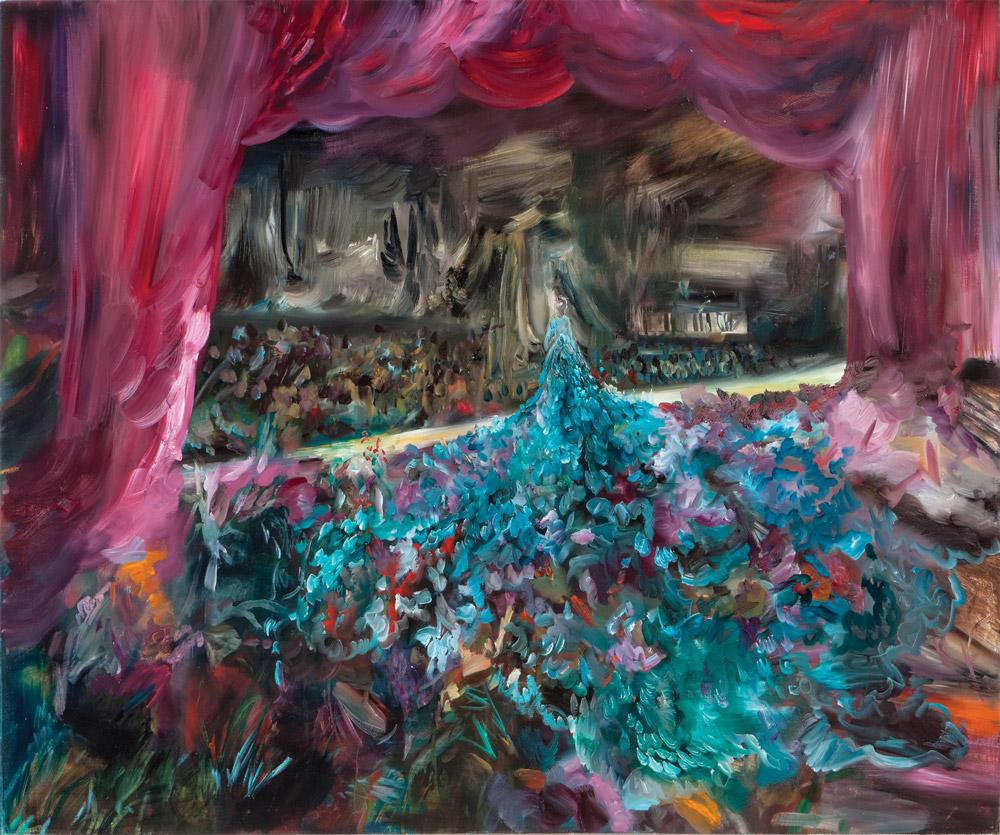While the concept of souvenir involontaire is perhaps most familiar to readers of Marcel Proust, it originated with French philosopher Henri Bergson. Involuntary memory refers to those fleeting moments that give rise to recollections within our subconscious mind. Curated by Ann MacDonald, director and curator at the Doris McCarthy Gallery at the University of Toronto Scarborough, “Souvenir involontaire” surveyed nearly a decade of work by Winnipeg-based artist Mélanie Rocan. MacDonald proposes that Rocan “owes her greatest impulse to the Symbolist outgrowth of Romanticism,” in that the work begs an emotional, rather than intellectual, reading.
Rocan’s work is ephemeral, fragmented. Upon each canvas, surreal worlds are constructed through spills of bed frames, abandoned chairs, eroding wallpaper, picket fences: colourful refuse from the houses erected on landscapes of memory. Each careful, considered dollop represents another tug at memory, another symbol from her visual lexicon. Bergson relates memories like these to beats of a drum emerging from within a larger symphony. These beats capture our attention “because they interest it more,” but these beats in actuality comprise our whole existence.
In Staging (2010), we cannot pinpoint where the performer ends and the audience begins—a feeling that presents itself through much of Rocan’s show. The exhibition then allowed the visitor the opportunity to act as artist—to connect the proverbial dots and lace together a story where our own associations wash the objects. Her allusions to time and memory grow less literal in more recent work, strengthening it. An interesting visual dialogue seems to have grown from the relationship between Rocan (a graduate from Concordia University’s MFA program), Eleanor Bond and Janet Werner.
In all of the decadent beauty, however, there is an unquestionable awareness of morbidity: time is transitory; memories are constructed. Rocan admits the work “lingers in between a darkness and a playfulness.” Broken Wall (2007) hovers on the darker side of the exhibition and prompts my (perhaps) obvious and overly generalized “grandmother” memory through papered walls crumbling to reveal gnarled tree branches, all surrounded by a blue-sky day. Sadly, the effect of this work was all but lost in its being hung exceedingly high. The salon-style hang in the second gallery presented a significant challenge to read the work accurately when so physically far removed.
Rocan’s wit poked through in small-scale works like Birth Marks (2012) and Casper (2010). Birth Marks depicts a woman’s near-naked torso peppered with colourful dots, while Casper—a feline-masked portrait—presents a clever departure from the more serious tools she generally employs for disguising subjects. Thomas Carlyle once wrote, “In a Symbol there is concealment and yet revelation,” and evidence of this profound notion can be found in every square inch of Mélanie Rocan’s work.
This is a review from the Spring 2014 issue of Canadian Art. To read more from this issue, visit its table of contents. To read the entire issue, pick up a copy on newsstands or the App Store until June 14.

 Mélanie Rocan, Staging, 2010. Oil on canvas, 1.67 x 2.13 m.
Mélanie Rocan, Staging, 2010. Oil on canvas, 1.67 x 2.13 m.







